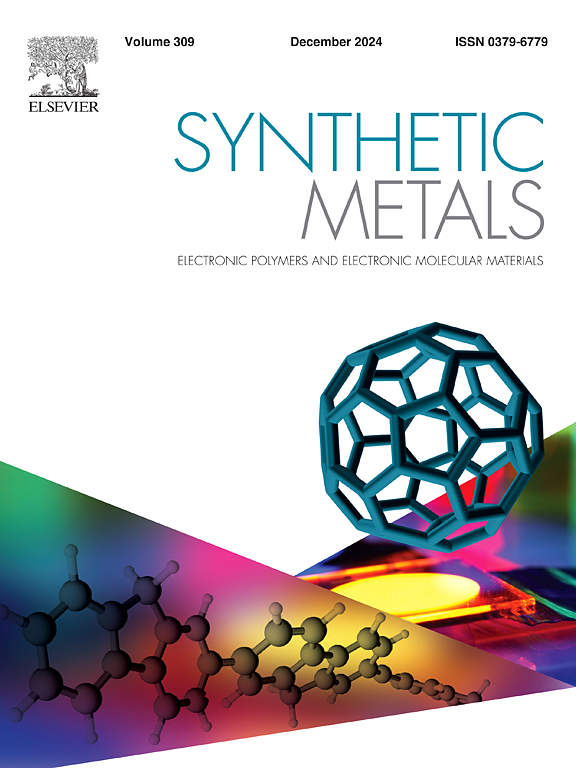多尺度Co-MOF衍生Co-N/C@graphene混合气凝胶的有效电磁波吸收
IF 4.6
3区 材料科学
Q2 MATERIALS SCIENCE, MULTIDISCIPLINARY
引用次数: 0
摘要
通过构建前驱体尺寸来定制mof衍生电磁波吸波材料的策略已成为一个新的研究方向。虽然探索石墨烯混合气凝胶中Co-MOF衍生物对电磁波吸收的尺寸适应性尚未得到广泛研究,但研究发现,通过改变电磁波吸收材料的组成和微观结构,可以获得更好的电磁波吸收效果。本文通过将石墨烯与由多尺度Co-MOF前体衍生的多尺度Co-MOF衍生物相结合,成功合成了一系列Co-N/C@graphene杂化气凝胶(CNGA)。结果表明,当填充率为20 wt%时,含有纳米级Co-MOF衍生物的CNGA具有最佳的反射损耗(- 46.8 dB, 2.7 mm)和最大的有效吸收带宽(5.3 GHz, 2.1 mm)。特殊的EMW吸收性能归功于CNGA中Co-MOF衍生物的小粒径和适当的填料比例所带来的独特损失机制的协同影响。本工作证明了Co-MOF衍生物的尺寸与CNGA的电磁参数之间的相关性,为开发先进的杂化气凝胶电磁波吸收材料提供了指导。本文章由计算机程序翻译,如有差异,请以英文原文为准。
Multi-scale Co-MOF derived Co-N/C@graphene hybrid aerogel for effective electromagnetic wave absorption
The strategy of customizing MOF-derived electromagnetic wave (EMW) absorbing materials through the construction of precursor size has become a new research direction. While exploring the dimensional adaptability of Co-MOF derivatives in graphene hybrid aerogel for electromagnetic wave absorption is not widely researched, manipulating the compositions and microstructures of EMW absorbing materials has been found to afford superior EMW absorption. Herein, a series of Co-N/C@graphene hybrid aerogel (CNGA) were successfully synthesized by integrating graphene and multi-scale Co-MOF derivatives which are derived from multi-scale Co-MOF precursors. The results displayed the CNGA containing nanoscale Co-MOF derivatives at a 20 wt% filler ratio exhibited the optimal reflection loss (−46.8 dB, 2.7 mm) and the maximum effective absorption bandwidth (5.3 GHz, 2.1 mm). The exceptional EMW absorption properties are credited to the collaborative impact of distinctive loss mechanisms benefited from the small particle size of Co-MOF derivatives in CNGA and appropriate filler ratio. This work demonstrates the correlations between the size of Co-MOF derivatives and electromagnetic parameters of CNGA, and provides a guidance for the development of advanced hybrid aerogel electromagnetic wave absorbing materials.
求助全文
通过发布文献求助,成功后即可免费获取论文全文。
去求助
来源期刊

Synthetic Metals
工程技术-材料科学:综合
CiteScore
8.30
自引率
4.50%
发文量
189
审稿时长
33 days
期刊介绍:
This journal is an international medium for the rapid publication of original research papers, short communications and subject reviews dealing with research on and applications of electronic polymers and electronic molecular materials including novel carbon architectures. These functional materials have the properties of metals, semiconductors or magnets and are distinguishable from elemental and alloy/binary metals, semiconductors and magnets.
 求助内容:
求助内容: 应助结果提醒方式:
应助结果提醒方式:


